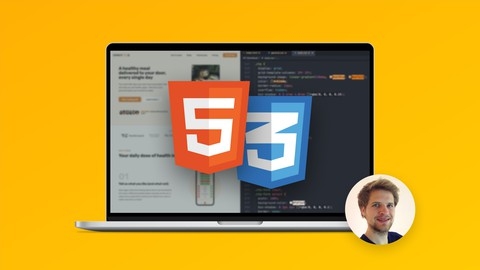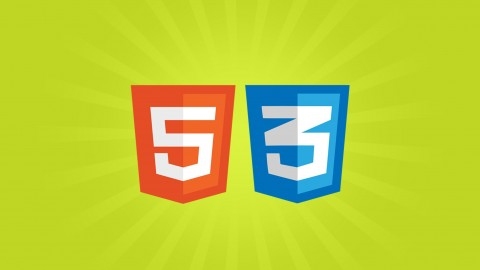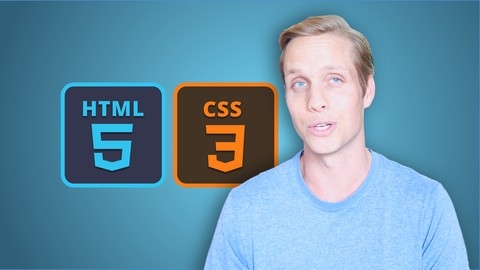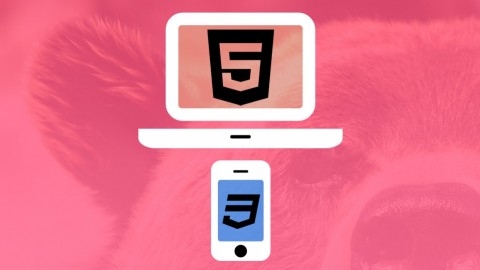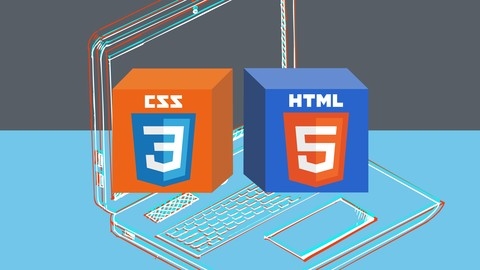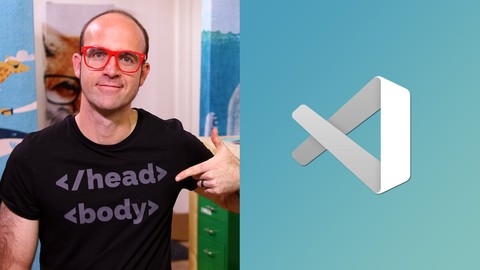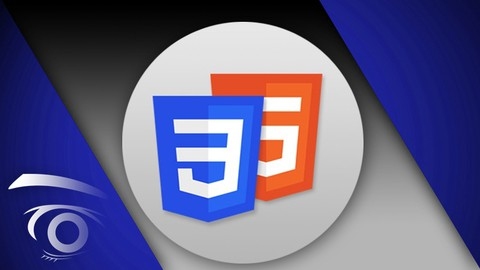HTML and CSS are the fundamental building blocks of the web.
They allow you to structure and style web pages, making them visually appealing and user-friendly.
Learning HTML and CSS empowers you to create websites, web applications, and even mobile apps, opening up a world of possibilities in the digital realm.
Finding the perfect HTML and CSS course on Udemy can feel like navigating a labyrinth.
You’re searching for a comprehensive program that’s engaging, practical, and taught by experienced instructors, but with so many options available, it’s easy to feel lost.
We’ve sifted through countless courses and, based on our rigorous analysis, we recommend "Build Responsive Real-World Websites with HTML and CSS" as the best course overall.
This program stands out for its in-depth coverage of both HTML and CSS fundamentals and its focus on practical skills that you can immediately apply to real-world projects.
From mastering responsive design techniques to building a complete website from scratch, this course is designed to equip you with the knowledge and confidence to succeed as a web developer.
While this course is our top recommendation, it’s just the beginning of your journey.
We’ve compiled a list of other excellent HTML and CSS courses on Udemy, tailored to different learning styles and skill levels.
Keep reading to discover the perfect course for you and embark on your web development adventure!
Build Responsive Real-World Websites with HTML and CSS
You’ll start by setting up your coding environment and creating your first webpage, ensuring a smooth entry into the course.
The initial chapters dive deep into the fundamentals of HTML and CSS, covering everything from document structure and text elements to styling techniques and the CSS box model.
You’ll learn how to work with colors, selectors, and even pseudo-classes to enhance your web pages.
As you progress, the course introduces you to the three layout techniques: floats, flexbox, and CSS grid.
You’ll master the art of creating responsive and visually appealing layouts, a crucial skill for any modern web developer.
But the course doesn’t stop there.
It delves into the principles of web design, teaching you rules for typography, color schemes, imagery, icons, and more.
You’ll learn how to create components like accordions, carousels, and tables, as well as layout patterns for hero sections and web applications.
The highlight of the course is the Omnifood project, where you’ll apply your newfound knowledge to build a real-world website from scratch.
You’ll learn responsive design principles, implement smooth scrolling and sticky navigation, optimize images, and even deploy your site to Netlify.
Throughout the course, you’ll develop essential developer skills like debugging, reading documentation, and using Chrome DevTools.
You’ll also get a taste of JavaScript, learning how to make your mobile navigation and forms work seamlessly.
HTML and CSS for Beginners - Build a Website & Launch ONLINE
The course starts with an introduction, providing tips to get you started and explaining what HTML is.
You’ll learn about page structure, creating your first HTML code, headings, comments, white space, line breaks, and popular HTML tags like images, links, tables, forms, and lists.
The course then dives into CSS, covering inline, internal, and external styles, selectors, IDs, classes, and linking JavaScript.
You’ll explore common styling properties and get extra lectures with examples on inserting pictures, hover effects, and more.
You’ll build a full website, learning about structure, menus, divs, footers, and styling different components.
The course even covers creating a messaging form with PHP, including form markup, styling, validation, sending emails, and adding images.
Finally, you’ll learn how to take your website online by uploading files, setting up a process PHP page, and getting a URL.
Modern HTML & CSS From The Beginning (Including Sass)
This course covers the fundamentals of HTML and CSS, starting with how the web works and the roles of these languages in web development.
You’ll learn to create basic HTML pages, structure content with headings, paragraphs, links, images, lists, and tables.
The course dives into HTML5 semantic tags and forms too.
For CSS, you’ll explore selectors, fonts, colors, backgrounds, the box model, positioning, and styling navigation menus and forms.
The real-world projects include building a hotel website to practice CSS layouts, and an “EdgeLedger” site using flexbox.
You’ll deploy sites to a shared hosting platform like GoDaddy, learning about different hosting types and setting up emails.
More advanced CSS concepts like animations, transitions, and transformations are covered through mini-projects.
You’ll learn CSS Grid and use it to build a “NewsGrid” website.
The course even touches on Sass (a CSS preprocessor) and creating a portfolio site with it.
Responsive Web Design: HTML5 + CSS3 for Entrepreneurs 2018
The course starts by introducing you to HTML5, the latest version of the markup language for building websites.
You’ll learn how to set up a text editor like Brackets and create your first HTML document.
It covers the basic HTML tags for structuring content like headings, paragraphs, images, and links.
As you progress, you’ll dive deeper into formatting text, adding citations and quotes, working with lists and tables, and using divs and spans as building blocks.
The course also explains crucial concepts like IDs, classes, and layout techniques.
Transitioning to CSS3, the latest CSS version, you’ll learn how to style your HTML content.
It covers the syntax, selectors for targeting elements, background colors/images, and the CSS box model which is fundamental for layout.
The real fun begins with a hands-on project to build an awesome landing page website from scratch.
You’ll set up the HTML structure with header, sections, and a form.
Then style everything using CSS - centering content, floating elements, styling the menu and buttons, creating columns, and more.
Along the way, the course provides challenges to test your understanding, as well as solutions to learn from.
By the end, you’ll have a fully responsive, multi-column landing page with sections for features, showcases, calls-to-action, and a footer.
Web Design for Beginners: Real World Coding in HTML & CSS
The course starts by introducing HTML, the markup language for creating web pages.
You’ll learn how to structure content using elements like headings, lists, and links.
It even covers adding media like images, audio, and video to your pages.
Once you have the HTML basics down, you’ll dive into CSS, the language for styling websites.
You’ll learn selectors to target elements, the box model for spacing, and layout techniques like floats and positioning.
The course goes beyond the basics too, covering typography, backgrounds, animations, and effects like shadows and rounded corners.
An entire section is dedicated to responsive design, ensuring your sites look great on any device.
You’ll learn responsive grids, flexbox for layout, and CSS Grid - a powerful new technique.
The course doesn’t just cover coding though.
You’ll also learn how to leverage JavaScript functionality without actually writing JavaScript, like creating slideshows, revealing content on click, and image galleries.
It even introduces Bootstrap, a popular CSS framework.
To take your skills further, you’ll get an overview of Sass, a CSS preprocessor that makes your stylesheets more maintainable and powerful.
Finally, you’ll learn how to put your site live on the web using GitHub Pages.
HTML5 and CSS3 Fundamentals
The course starts with an introduction to HTML, teaching you the basics of creating web pages, formatting text, working with lists, and inserting images.
This lays a solid foundation for building websites.
Once you’ve grasped the HTML fundamentals, you’ll dive into CSS.
You’ll learn how to style your pages, work with fonts, colors, and list styles.
The course also covers advanced CSS selectors, which allow you to target specific elements for styling.
Links are a crucial part of any website, so the syllabus includes a dedicated chapter on creating basic links, in-page links, styling links, and building navigation menus.
This will enable you to create user-friendly, well-structured websites.
The layout chapter teaches you how to arrange elements on a page, including block spacing, positioning, and layout techniques.
This is essential for creating visually appealing and organized web pages.
Tables and forms are also covered, which are important for presenting data and collecting user input.
You’ll learn how to create tables, style them, and build various form elements, including HTML5 form controls.
Video integration is becoming increasingly important for modern websites, so the course includes a chapter on preparing and embedding videos on your pages.
Throughout the syllabus, you’ll work on website projects that allow you to apply what you’ve learned in a practical setting.
This hands-on approach reinforces your understanding and helps you build a portfolio of work.
Build Websites from Scratch with HTML & CSS
The course starts by introducing you to HTML and CSS - the core languages for building websites.
You’ll learn what they are, why they’re important, and get an overview of HTML tags, attributes, and elements.
Right off the bat, you’re taught best practices for naming and organizing your website files and folders like a pro.
The first major section dives into the foundations of HTML.
You’ll learn how to structure an HTML document, add headings, paragraphs, text formatting, links, lists, images, and more.
The lessons build up logically, letting you get hands-on coding practice with mini coding exercises along the way.
By the end, you’ll understand advanced HTML5 elements like nav, section, article, and aside.
Next up is an in-depth look at CSS foundations.
You start with the basics of styling rules, selectors, properties, and values.
The course covers the different ways to add CSS to a site, including external stylesheets which is the recommended approach.
You’ll work with various CSS selectors like IDs, classes, and descendants to precisely target elements.
Other key CSS concepts like the box model, colors, text styling, backgrounds, and form styling are all covered.
The final section ties everything together as you build a complete website step-by-step.
You’ll code the HTML structure, then style it with CSS following best practices.
The lectures guide you through every part of the site - the header, hero section, content areas, footer, and more.
By the end, you’ll have a modern, responsive website you coded yourself.
The course wraps up by discussing next steps for continuing your web development journey.
HTML, CSS, & JavaScript - Certification Course for Beginners
The course starts with an in-depth exploration of HTML.
You’ll learn how to structure a web page, add headings, paragraphs, lists, images, videos, and links.
Quizzes are included to reinforce your understanding of crucial HTML elements like the , ,
,
- , and
tags.
As you progress, you’ll delve into more advanced concepts like creating forms, tables, and iframes.
Once you’ve mastered HTML, the course shifts its focus to CSS.
You’ll discover how to style your web pages with colors, fonts, backgrounds, and borders.
CSS classes, IDs, and selectors are covered in detail, enabling you to target specific elements for styling.
The course also teaches you positioning techniques like static, relative, absolute, and fixed, allowing you to control the layout precisely.
Towards the end of the CSS section, you’ll work on a project to apply your newfound skills.
Next up is the Document Object Model (DOM), which bridges the gap between HTML and JavaScript.
You’ll learn how to manipulate web page elements using JavaScript, opening up a world of interactivity and dynamic content.
The JavaScript section is comprehensive, starting with the basics like variables, data types, and operators.
You’ll then explore arrays, objects, strings, and functions – essential building blocks for any JavaScript program.
The course covers control structures like conditional statements and loops, enabling you to write complex logic.
Event handling is also covered, allowing you to respond to user actions like clicks and key presses.
Throughout the JavaScript section, you’ll work on two projects: a background color changer and a photo gallery.
These hands-on projects will solidify your understanding of JavaScript and prepare you for real-world web development scenarios.
Responsive Web Design Essentials - HTML5 CSS3 Bootstrap
The course starts by introducing you to the basics of HTML and CSS.
You’ll learn how to create and test your first web page, understand HTML5 and CSS3, and work with essential HTML tags like head, body, title, and description.
Along the way, you’ll pick up skills like adding structure with div tags, styling with CSS classes, nesting divs, and separating your styles into an external CSS file.
The real fun begins with Project 1 - building a restaurant website from scratch.
You’ll master techniques like adding images, links, Google Maps embed, email buttons, and even putting your site live on the internet with your own domain.
The projects keep getting more advanced as you move to a bike repair site (Project 2) where you’ll dive into flexbox, responsive design principles, custom buttons, and even a dropdown navigation menu.
In Project 3, you’ll build a full responsive portfolio website, learning media queries to adapt layouts for different devices.
You’ll explore image optimization, srcset for responsive images, pinned navigation, and a mobile menu powered by jQuery.
The course culminates with Project 4 - a website built using Bootstrap 4.
You’ll gain insights into Bootstrap’s grid system, components, styles, and customization.
Along the way, you’ll create uneven column widths, responsive images, sticky navs, image carousels, card layouts, and more.
What stands out is the course’s hands-on approach through projects that reinforce concepts like responsive design, flexbox, media queries, and Bootstrap.
The lectures explain techniques clearly, often showing multiple ways to achieve the same result.
You’ll pick up valuable workflow tips for tools like Visual Studio Code, Chrome DevTools, and exporting assets from design software.
HTML & CSS - Certification Course for Beginners
The course begins with an introduction to HTML, teaching you the basic structure of a web page, including head tags and body tags.
You’ll learn how to format text, create lists, insert images and videos, and link between pages using anchor tags and URLs.
The syllabus dives deep into HTML forms, covering form tags, attributes, input fields like text boxes and dropdowns, as well as checkboxes, radio buttons, and submission buttons.
You’ll even build a complete HTML project from scratch, implementing headers, callouts, images, text, links, forms, tables, and footers.
Moving on to CSS, you’ll start with the fundamentals - CSS rules, selectors, colors, and how to style elements using classes, IDs, and spans.
The course covers text properties, fonts, margins, padding, borders, and backgrounds.
You’ll learn advanced concepts like transparency, positioning elements, the float and clear properties, and z-index for controlling overlay.
The CSS section also includes styling links and tables, ensuring your web pages look polished.
Finally, you’ll apply your CSS knowledge to a project, creating navigation rules and responsive styles to make your site mobile-friendly.
